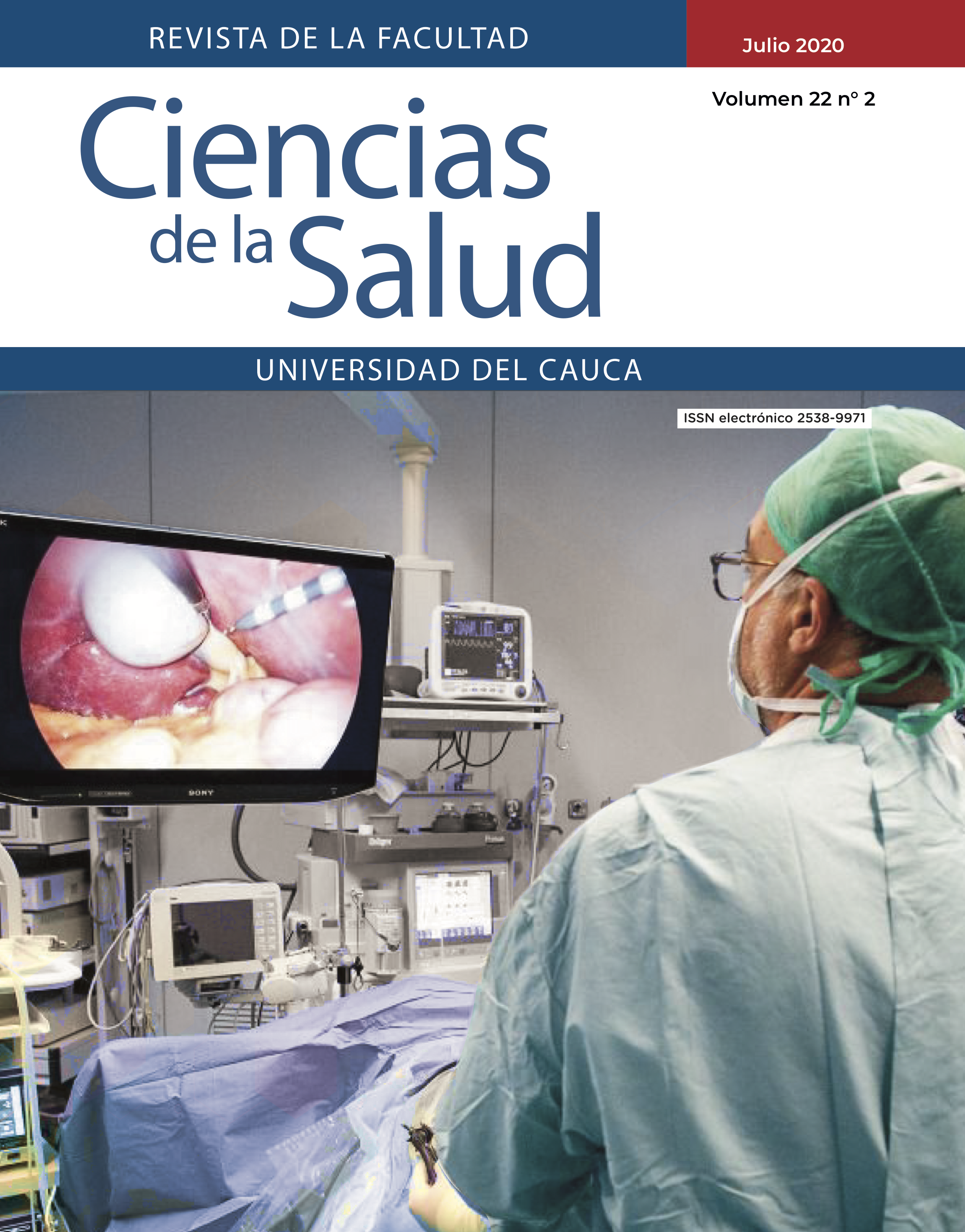Sickle cell anemia and resistance to malaria: Narrative review
Abstract
Sickle cell disease (SCD) is an autosomal recessive hemoglobinopathy, caused by the mutation of the β-globin chain gene that results in the replacement of valine by glutamic acid at the position of the sixth amino acid in the hemoglobin. There are various molecular and cellular mechanisms by which its pathophysiology is explained and thanks to its current understanding, new pharmacological agents are under clinical and preclinical research. Sickle hemoglobin (HbS), which is the consequence of this mutation, is related as a form of protection against malaria in heterozygotes; however, homozygous status (HbSS) may be associated with increased susceptibility to malaria. This protection relationship in heterozygotes is evidenced in lower levels of parasitaemia and later onset, that various theories had tried to explain. Therefore, this article aims to review the relationship between SCD and the protection it generates in malaria infection, in addition to exposing the pathophysiology and treatment of SCD to achieve a broader understanding of the disease.
Downloads
Disciplines:
Internal Medicine, HematologyReferences
2. Adjei GO, Goka BQ, Enweronu-Laryea CC, Rodrigues OP, Renner L, Sulley AM, et al. A randomized trial of artesunate-amodiaquine versus artemether-lumefantrine in Ghanaian paediatric sickle cell and non-sickle cell disease patients with acute uncomplicated malaria. Malar J. 2014;13:369. doi: 10.1186/1475-2875-13-369.
3. Eleonore NLE, Cumber SN, Charlotte EE, Lucas EE, Edgar MML, Nkfusai CN,et al. Malaria in patients with sickle cell anaemia: burden, risk factors and outcome at the Laquintinie hospital, Cameroon. BMC Infect Dis. 2020;20(1):40. doi:10.1186/s12879-019-4757-x.
4. Diakité SA, Ndour PA, Brousse V, Gay F, Roussel C, Biligui S, et al. Stage-dependent fate of Plasmodium falciparum-infected red blood cells in the spleen and sickle-cell trait-related protection against malaria. Malar J. 2016;15(1):482.
5. Milner DA Jr. Malaria Pathogenesis. Cold Spring Harb Perspect Med. 2018;8(1). pii: a025569. doi: 10.1101/cshperspect.a025569.
6. Bwire GM, Majigo M, Makalla R, Nkinda L, Mawazo A, Mizinduko M, et al. Immunoglobulin G responses against falciparum malaria specific antigens are higher in children with homozygous sickle cell trait than those with normal hemoglobin. BMC Immunol. 2019;20(1):12. doi: 10.1186/s12865-019-0294-z.
7. Komba AN, Makani J, Sadarangani M, Ajala-Agbo T, Berkley JA, Newton CR, et al. Malaria as a cause of morbidity and mortality in children with homozygous sickle cell disease on the coast of Kenya. Clin Infect Dis. 2009;49(2):216-22. doi: 10.1086/599834.
8. Albiti AH, Nsiah K. Comparative haematological parameters of HbAA and HbAS genotype children infected with Plasmodium falciparum malaria in Yemen. Hematology. 2014;19(3):169-74. doi: 10.1179/1607845413Y.0000000113
9. Oniyangi O, Omari AA. Malaria chemoprophylaxis in sickle cell disease.Cochrane Database Syst Rev. 2019;2019(11). doi: 10.1002/14651858.CD003489.pub2
10. Gupta NK, Gupta M. Sickle cell anemia with malaria: a rare case report. Indian J Hematol Blood Transfus. 2014;30 (1):38–40. doi:10.1007/s12288-012-0181-8
11. Rojas-Martínez A., Calderón E., Vidal M.A., Arroyo F., García-Hernández R., Torres L.M. Crisis drepanocítica y tratamiento del dolor. Rev. Soc. Esp. Dolor. 2015; 22 (4): 165-167. doi.org/10.4321/S1134-80462015000400004.
12. Azar S, Wong TE. Sickle Cell Disease: A Brief Update. Med Clin North Am. 2017;101(2):375-393. doi: 10.1016/j.mcna.2016.09.009
13. Eller R, da Silva D.B. Evaluation of a neonatal screening program for sickle-cell disease. J Pediatr (Rio J). 2016; 92 (4): 409-413. doi: 10.1016/j.jped.2015.10.002.
14. Castro IPS, Viana MB. Cognitive profile of children with sickle cell anemia compared to healthy controls. J Pediatr (Rio J). 2018. https://doi.org/10.1016/j.jped.2018.04.012
15. World Health Organization. World Malaria Report 2019. [Consultado el 24 Abr 2020] Disponible en: https://www.who.int/malaria/media/world-malaria-report-2019/es/.
16. Aneni EC, Hamer DH, Gill CJ. Systematic review of current and emerging strategies for reducing morbidity from malaria in sickle cell disease. Trop Med Int Health. 2013;18(3):313-27. doi: 10.1111/tmi.12056.
17. Kato GJ, Gladwin MT, Steinberg MH. Deconstructing sickle cell disease: reappraisal of the role of hemolysis in the development of clinical subphenotypes. Blood Rev 2007;21(1):37–47.
18. Díaz-Morejón L, Rodríguez-Jorge B, García-Sánchez D, León-Rayas Y, Aguilar-Lezcano L, Santacruz-Leonard M. Anemia drepanocítica: características generales de los pacientes a su diagnóstico. Revista Finlay [Internet]. 2019; 9(1): [aprox. 6 p.]. Disponible en: http://www.revfinlay.sld.cu/index.php/finlay/article/view/681
19. Ayala Viloria Alfonso J, González Torres Henry J, David Tarud Gabriel J. Anemia de células falciformes: una revisión. Salud, Barranquilla [Internet]. 2016;32 (3): 513-527. Disponible en: http://www.scielo.org.co/scielo.php?script=sci_arttext&pid=S0120-55522016000300014&lng=en.
20. Zúñiga C. Pamela, Martínez G. Cindy, González R. Lina M., Rendón C. Diana S., Rojas R. Nicolás, Barriga C. Francisco et al. Enfermedad de células falciformes: Un diagnóstico para tener presente. Rev. chil. pediatr. [Internet]. 2018; 89(4): 525-529. Disponible en: https://scielo.conicyt.cl/scielo.php?script=sci_arttext&pid=S0370-41062018000400525&lng=es. doi: 10.4067/S0370-41062018005000604
21. Tisdale JF, Thein SL, Eaton WA. Treating sickle cell anemia. Science. 2020;367(6483):1198-1199. doi: 10.1126/science.aba3827.
22. Monus T, Howell CM. Current and emerging treatments for sickle cell disease. JAAPA. 2019;32(9):1-5. doi: 10.1097/01.JAA.0000578812.47138.99.
23. Fernandes Q. Therapeutic strategies in Sickle Cell Anemia: The past present and future. Life Sci. 2017; 178:100-108. doi: 10.1016/j.lfs.2017.03.025.
24. Nevitt SJ, Jones AP, Howard J. Hydroxyurea (hydroxycarbamide) for sickle cell disease. Cochrane Database Syst Rev. 2017;4:CD002202. doi: 10.1002/14651858.CD002202.pub2.
25. Hasson C, Veling L, Rico J, Mhaskar R. The role of hydroxyurea to prevent silent stroke in sickle cell disease: Systematic review and meta-analysis. Medicine (Baltimore). 2019;98(51):e18225. doi: 10.1097/MD.0000000000018225.
26. Cooper TE, Hambleton IR, Ballas SK, Johnston BA, Wiffen PJ. Pharmacological interventions for painful sickle cell vaso-occlusive crises in adults. Cochrane Database Syst Rev. 2019;2019(11). doi: 10.1002/14651858.CD012187.pub2.
27. Merlet AN, Messonnier LA, Coudy-Gandilhon C, Béchet D, Gellen B, Rupp T, et al. Beneficial effects of endurance exercise training on skeletal muscle microvasculature in sickle cell disease patients. Blood. 2019;134(25):2233-2241. doi: 10.1182/blood.2019001055.
28. Padaro E, Kueviakoe IMD, Agbétiafa K, Magnang H, Mawussi K, Layibo Y, Vovor A. Therapeutic phlebotomy during major sickle cell disease in Togo. Med Sante Trop. 2019;29(1):106-107. doi: 10.1684/mst.2019.0886.
29. Kapoor S, Little JA, Pecker LH. Advances in the Treatment of Sickle Cell Disease. Mayo Clin Proc. 2018;93(12):1810-1824. doi: 10.1016/j.mayocp.2018.08.001.
30. Ataga KI, Stocker J. The trials and hopes for drug development in sickle cell disease. Br J Haematol. 2015;170(6):768-80. doi: 10.1111/bjh.13548.
31. Ferreira FA, Benites BD, Costa FF, Gilli S, Olalla-Saad ST. Recombinant erythropoietin as alternative to red cell transfusion in sickle cell disease. Vox Sang. 2019;114(2):178-181. doi: 10.1111/vox.12750.
32. Demirci S, Uchida N, Tisdale JF. Gene therapy for sickle cell disease: An update. Cytotherapy. 2018 Jul;20(7):899-910. doi: 10.1016/j.jcyt.2018.04.003.
33. Olowoyeye A, Okwundu CI. Gene therapy for sickle cell disease. Cochrane Database Syst Rev. 2018;11:CD007652. doi: 10.1002/14651858.CD007652.pub6.
34. López C, Saravia C, Gomez A, Hoebeke J, Patarroyo MA. Mechanisms of genetically-based resistance to malaria. Gene. 2010;467(1-2):1-12. doi: 10.1016/j.gene.2010.07.008.
35. Miura K, Diakite M, Diouf A, Doumbia S, Konate D, Keita AS et al. Relationship between malaria incidence and IgG levels to Plasmodium falciparum merozoite antigens in Malian children: impact of hemoglobins S and C. PLoS One. 2013;8(3):e60182. doi: 10.1371/journal.pone.0060182.
36. Nasr A, Saleh AM, Eltoum M, Abushouk A, Hamza A, Aljada A, et al. Antibody responses to P. falciparum Apical Membrane Antigen 1(AMA-1) in relation to haemoglobin S (HbS), HbC, G6PD and ABO blood groups among Fulani and Masaleit living in Western Sudan. Acta Trop. 2018;182:115-123. doi: 10.1016/j.actatropica.2018.02.030.
37. Tan X, Traore B, Kayentao K, Ongoiba A, Doumbo S, Waisberg M, et al. Hemoglobin S and C heterozygosity enhances neither the magnitude nor breadth of antibody responses to a diverse array of Plasmodium falciparum antigens. J Infect Dis. 2011;204(11):1750-61. doi: 10.1093/infdis/jir638.
38. Beaudry JT, Krause MA, Diakite SA, Fay MP, Joshi G, Diakite M, et al. Ex-vivo cytoadherence phenotypes of Plasmodium falciparum strains from Malian children with hemoglobins A, S, and C. PLoS One. 2014;9(3):e92185. doi: 10.1371/journal.pone.0092185.
39. Diakité SA, Ndour PA, Brousse V, Gay F, Roussel C, Biligui S, et al. Stage-dependent fate of Plasmodium falciparum-infected red blood cells in the spleen and sickle-cell trait-related protection against malaria. Malar J. 2016;15(1):482.
40. Archer NM, Petersen N, Clark MA, Buckee CO, Childs LM, Duraisingh MT. Resistance to Plasmodium falciparum in sickle cell trait erythrocytes is driven by oxygen-dependent growth inhibition. Proc Natl Acad Sci U S A. 2018;115(28):7350-7355. doi: 10.1073/pnas.1804388115.
41. Duraisingh M, Lodish H. Sickle Cell MicroRNAs Inhibit the Malaria Parasite. Cell Host Microbe. 2012; 12(2): 127–128. doi: 10.1016/j.chom.2012.08.001












.png)



